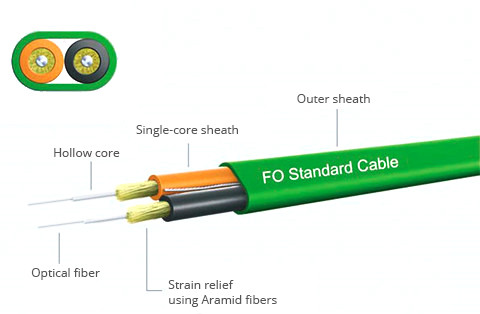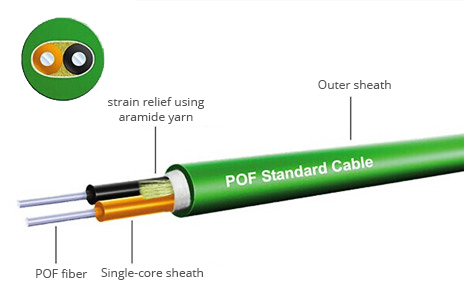Any plastic or glass conduit used to carry light is referred to as an optical fiber. Although the theory behind it is relatively old, it has become a very essential technology in recent years as communications infrastructure has begun to use this fiber to carry data at extraordinarily high rates. Fiber optic communications, on the other hand, offers a wide range of uses in medicine, consumer products, and other fields. High-definition television signals are sent using fiber optic cables.
Fiber optic cables offer many advantages over traditional metal wires, the most important being that signal degradation is greatly reduced. Additionally, it is immune to electromagnetic interference, which can severely hinder the transmission of data along normal metal wires. This also adds an extra measure of safety, as the fiber can withstand electromagnetic pulses that can damage metal cables.
What is Glass Optical Fiber?
Glass fiber is an optical fiber made of glass. Glass fiber optic cables consist of tiny strands of glass that are durable and high temperature resistant, but less resistant to flexibility and accidental breakage. Since glass cores are efficient at transmitting light, significantly increasing the transmission speed, they can be used for long sensing distances. This type of fiber is often ideal for harsh environments, as it can function properly even when subjected to mechanical stress, high temperatures or chemicals.

Advantages of Glass Optical Fiber
Applied to longer distance transmission
Durable and high temperature resistant
High transmission speed
Less losses
Can be used in corrosive and wet environments or even vacuum environments
Disadvantages of Glass Optical Fiber
More fragile and easy to break
What is Plastic Optical Fiber?
Plastic optical fiber, also known as polymer optical fiber or POF, is a type of optical fiber that is constructed of plastic rather than glass. PMMA (acrylic) fibers with a silicone resin coating are the most common type of plastic fiber. It's usually just a single strand of fiber. It adds to the longevity of data connections, as well as lighting, industrial, and decorative uses. Plastic optical fibers play an essential part in data transmission in military communication networks and multimedia equipment because they are an ideal transmission medium for short-distance communication networks.

Advantages of Plastic Optical Fiber
Low material costs and low installation costs for associated components
Flexible yet strong, able to bend farther without breaking
Easy handling and installation, easy to operate
The green or red light of the plastic optical fiber is harmless to the eyes
Disadvantages of Plastic Optical Fiber
Only suitable for short distance transmission
Cannot withstand extreme temperatures
Conclusion
Whether it is plastic optical fiber or glass optical fiber, before choosing, you need to distinguish between them and choose the one that best suits your network needs. This article describes the difference between plastic fibers and glass fibers. Hope it helps you figure out these two fibers.
Baudcom offers all kinds of Fiber Optic related products. For more information, please feel free to contact us.